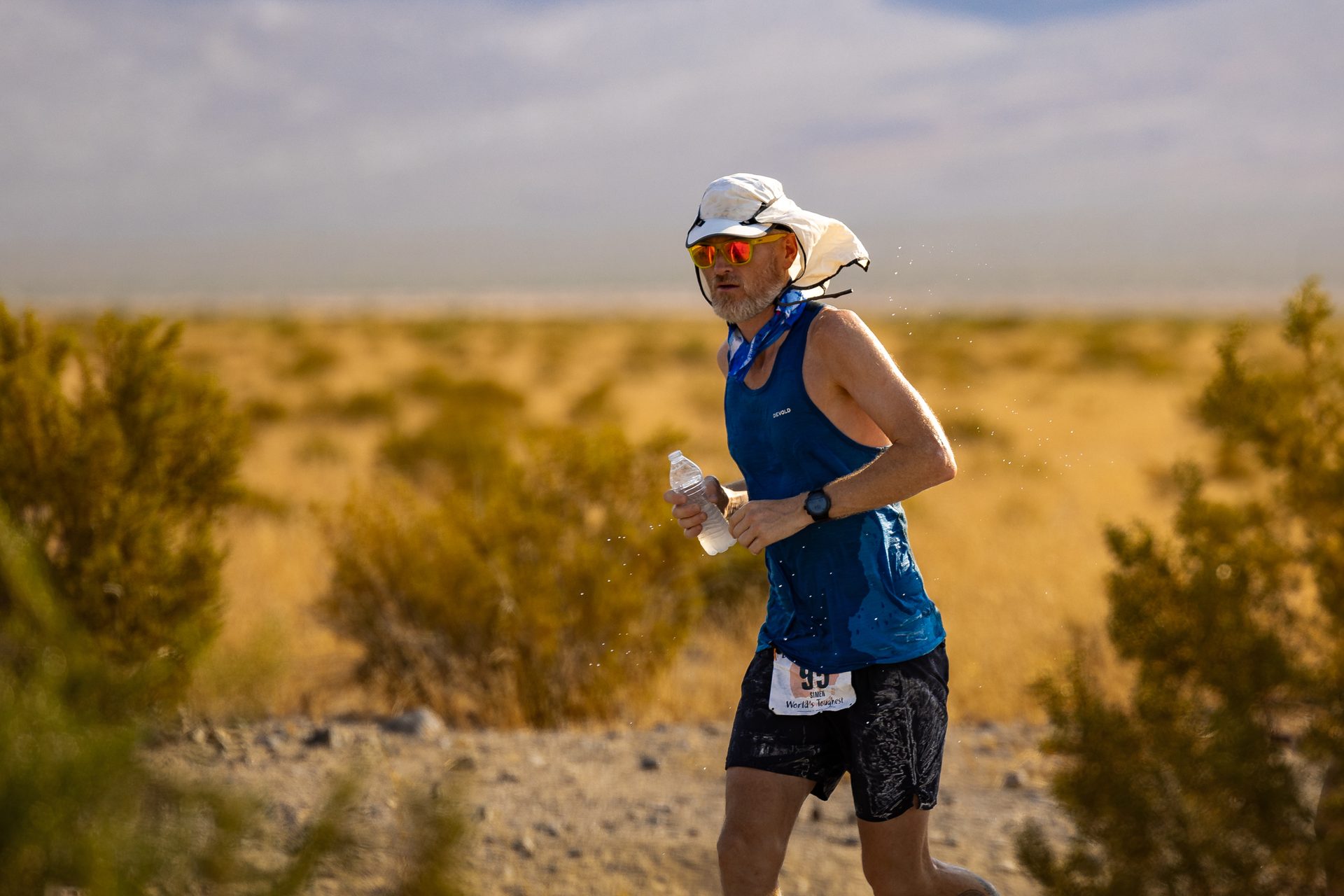Over 122°F. 135 miles on burning-hot asphalt. Powered by nothing but your legs. Badwater 135 is not for everyone.
Then again, Simen Holvik isn’t just anyone. The 48-year-old Norwegian has won several of the world’s toughest ultramarathons – and in 2023, he topped the men’s field in his very first attempt at Badwater.
In 2024, he returned to the California desert with a clear mission: repeat the accomplishment – and chase the course record. Along with his race plan came a bold challenge from Devold: run the entire race in merino wool.
“Devold wanted to prove once and for all that merino wool works incredibly well in conditions like this – even if that sounds strange to a lot of people,” says Simen.
“At first, I thought: no one in their right mind runs in wool in the middle of summer. Not in 122 degrees. But then I thought – I’ve done wilder things. Why not? Why not trust a company that’s been pioneering wool for more than 170 years?”
Myth: Wool is only for cold weather
“Crazy,” many might think. Isn’t wool meant to keep you warm? That’s the last thing you’d want while running in desert heat, right?
Exactly. One of Simen’s top priorities during Badwater was staying as cool as possible. For him, wearing something that kept him comfortable in the most uncomfortable conditions was essential. That’s why he chose merino wool.
Myth: Wool makes you hot and sweaty
The merino wool Simen ran in had a few key properties that made all the difference in the brutal desert climate.
“The most important thing is UV protection. When the sun is pounding down on you in 122 degrees, that matters a lot,” Simen explains.
His crew poured water on him throughout the race to keep him as cool as possible. Avoiding sweat in 122 degrees is impossible, but according to Simen, the wool made a big difference.
“The merino helped me feel less clammy. For me, it was the perfect solution,” he says.
Myth: Synthetic fabrics are always better for training
Simen has raced in plenty of synthetic gear before. But after his Badwater experience, his preference is clear.
“If I had to choose between synthetic and merino? No question – merino. I prefer natural materials. They just fit better with how I live and think,” says Holvik.
His story is proof that wool isn’t just for snowy hikes – it can also be your best ally when the temperature hits triple digits.
“For me, merino was perfect in the heat. I was honestly surprised by how well it worked,” he says.
Myth: Wool must be washed all the time
Since last year’s Badwater, Simen has logged many miles in the same Devold merino tee – and it’s still going strong.
“I haven’t washed it since Badwater. Just aired it out. Still smells fine,” he says with a smile.
FACT: Why merino wool performs in extreme heat
1. Natural temperature regulation
Merino insulates against heat as well as cold. The fibers breathe and move heat away from your body.
2. UV protection
Merino naturally protects you from harmful UV rays – no chemical treatments needed.
3. Moisture control and comfort
The fibers wick moisture away from your skin and keep you drier than synthetics – even in high humidity or extreme heat.
4. Odor resistance – less washing required
Lanolin in the wool resists bacterial growth, which helps your clothes stay fresh longer. Just air them out – no wash necessary.
Lining up again
In July 2025, Simen will return to the start line in Death Valley. And yes – he’ll be wearing merino wool from Devold.
Find your favorites from Devold
See more products from Devold

RUNNING MERINO 130 T-SHIRT MAN

RUNNING MERINO 130 SHIRT MAN
